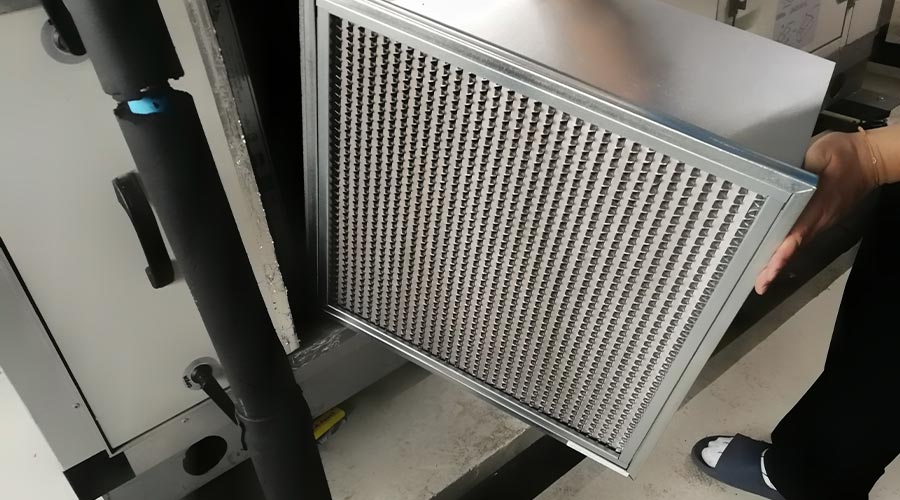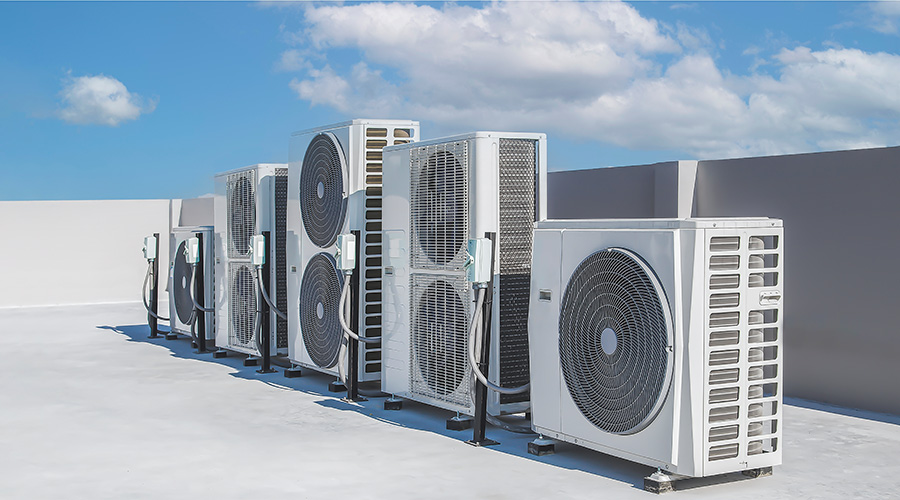Evaluating The Effectiveness Of UVC Treatments For HVAC Systems
Facility managers who are considering UVC treatments for HVAC systems need to evaluate the effectiveness of that approach. Many facility managers deploy UVC systems with the intent to clean up condenser coils and net an efficiency return, with the byproduct of that being improved IAQ. Fencl asserts that many systems can be returned to near-original capacity once the coils are unencumbered by biofilm.
"It allows owners to raise temperature setpoints," says Leach. "Our clients have seen significant improvement, particularly in reduced need for capacity of their systems."
"At the end of the day, it's about improving air quality in buildings by keeping evaporative coils free of microbial growth, which improves energy efficiency," says Engel. "With less restriction of airflow, there's improved heat transfer, and there will be energy savings associated with that."
Just how much savings is still up for debate, and is understandably variable based upon system size, organizational requirements for conditioned air, system age and a host of other factors.
Engel says verifiable results come as soon as three months to more than 12 months.
Quantifying Effectiveness
The general consensus is that UVC systems work, both for improvement of IAQ and increased HVAC efficiency. But, most experts concede, the proof is largely anecdotal, and bona fide, peer-reviewed studies are very few in number. That's changing, they say, with more empirical evidence appearing in the burgeoning field of UVC studies.
Nevertheless, experts and manufacturers representatives alike still temper their enthusiasm with caveats. "I tell our clients it's not rocket science, but it's also not an exact science," says Million.
In UVDI's case, the company will have an independent air balance company take inlet and outlet readings on the coil before UVC installation. In several months, repeat readings are taken to measure pressure drop across the coil to help the owner calculate potential energy savings.
Martin also agrees that there's substantial evidence of UV effectiveness, but that much of it is anecdotal.
To date, some of the most rigorous reports address IAQ improvements; fewer address energy savings and efficiency gains — the kind of cost improvement numbers that will sway facility executives to make an investment in UVC systems.
"Reducing sick leave is not what will convince building owners," Martin says.
Still, he notes that the systems are effective, even if there aren't studies to back it up yet.
"There have been a lot of effective systems installed, but the development of UV systems is as much art as it is science and we're hoping to change that, especially with greater numbers of empirical, double-blind studies and the help of ASHRAE," he says. "But we're still five or 10 years out from real substantial evidence."
Fencl echoes Martin's comments, noting that ASHRAE's involvement during the last decade or so has had a huge influence on UVC acceptance.
"The studies have become more bulletproof in terms of being attacked via peer-reviewed questions that come from engineers," he says. "The bottom line is that there's more credible testing done recently."
Installing UVC Properly
At present, most owners rely on manufacturers to design and install systems. Manufacturers say they can make basic calculations on systems requirements with a relatively small amount of information. For coil cleaning, they need to know the height and width of the coil, at a minimum. For air duct cleaning, they generally need to know duct size and CFM rate.
"The unit has to be designed for the application," says Engel. "There's a lack of information out there, yet UV is very effective and manufacturers want to help owners understand that."
Leach recommends that owners go to a consulting engineering firm and look for reputable UVC suppliers in the area.
"Determine how much energy should be designed into the array of the UVC system," he says.
Good firms must be able to demonstrate that they can design the system correctly, including the required dosage of energy and the ability to maintain coil cleanliness throughout 12 months of operation.
Loren Snyder, a contributing editor for Building Operating Management, is a writer who specializes in facility issues. He was formerly managing editor of Building Operating Management.
Related Topics:













